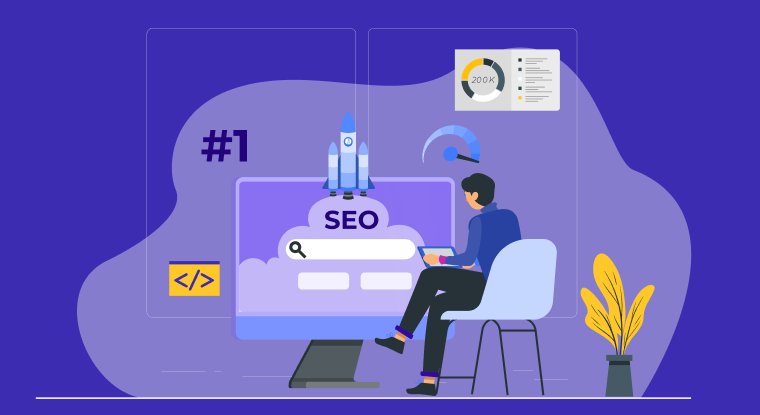Understanding On-Page SEO and Its Importance
On-page SEO is the cornerstone of any successful digital marketing strategy, focusing on optimizing individual web pages to secure higher rankings and attract relevant traffic from search engines. Unlike off-page techniques, such as link building or social media promotion, on-page SEO is entirely within your control. By refining everything from the content you publish to key HTML source code elements, you help search engines better understand your site. This increased clarity not only improves visibility in search results but also enhances the experience for your site visitors, as well-structured content is easier to navigate and more trustworthy. Moreover, effective on-page SEO supports other marketing channels, amplifying your reach over time. For those seeking expert implementation, on page SEO services offer professional guidance tailored to your business needs, enabling even small businesses to compete effectively in competitive digital spaces.
Implementing on-page SEO boosts your site’s relevance for both users and search engines. Search engines, especially Google, use numerous signals from your webpages to determine where to rank them for specific queries. Critical elements such as keyword placement, meta tags, content quality, and user experience are all weighted in their algorithm. Optimizing these components ensures your site is accessible, understandable, and engaging. This can lead to more sustained and meaningful organic traffic growth, as users are more likely to stay on your page and return in the future when their initial experience is positive.
Conducting Comprehensive Keyword Research
Keyword research forms the backbone of your on-page SEO efforts and should be the first step in your optimization process. Identifying the search terms your audience actually uses allows you to create content that truly meets their needs and intent, rather than guessing at what you think might matter. Using keyword research tools provides valuable insights into keyword volume, competitiveness, and variation, giving you the foundation to build a strategy that targets realistic but impactful search terms. For a more detailed guide on how to conduct effective keyword research, you can refer to this comprehensive resource from Search Engine Land. Implementing relevant keywords naturally throughout your content, mainly in titles, headings, and introductory paragraphs, improves your chances of ranking for those queries while also enhancing content relevance for readers.
Long tail keywords, which are phrases with three or more words, are especially effective for reaching highly targeted audiences. These specific terms often reflect advanced stages in the buying journey, meaning visitors who arrive through long tail searches tend to be closer to taking action. For example, keywords like “best budget running shoes for flat feet” are less competitive and capture users with a definitive intent. By focusing on these as part of your strategy, you position your site to answer more specific questions and attract visitors who are closer to making a decision, which can significantly improve your conversion rates.
Optimizing Title Tags and Meta Descriptions
Title tags and meta descriptions are among the first elements users and search engines encounter. A well-crafted title tag incorporates your main keyword in a way that feels natural and enticing while adhering to length guidelines so it doesn’t get cut off in search results. Meta descriptions, typically limited to 160 characters, should provide a concise and compelling summary of each page’s content. When written effectively, these elements can make your listing stand out, offering users a clear reason to click through to your site instead of competing results.
Optimized titles and meta descriptions not only improve click-through rates but also reinforce keyword relevance for search engines, increasing your page’s chances of ranking higher. Strong meta tags are a signpost for both algorithms and users, setting expectations and driving qualified traffic. For more guidance on best practices, major digital marketing platforms, such as Moz, offer in-depth resources on writing effective meta tags and optimizing your search presence. Continuously revisiting and refining these on-page elements will help maintain your competitive advantage as search algorithms evolve.
Enhancing Content Quality and Readability
Search engines prioritize websites that deliver value to users, making content quality a major ranking factor. Producing high-quality, informative content that solves user problems or answers their questions keeps both algorithms and visitors satisfied. Aim for comprehensive, long-form articles—often 1,500 words or more—while balancing detail and clarity. Use concise language, robust examples, and clear explanations to make your content accessible to a wide audience. Breaking up text with short paragraphs, bullet points, and descriptive subheadings not only increases readability but also makes your content easier to scan and digest, which is essential for retaining users’ attention in a competitive online landscape.
Incorporate images, data visualizations, or videos where applicable, as multimedia can reinforce your message and engage visitors on multiple levels. Regularly update your pages with new insights, relevant statistics, or trending information. Well-maintained content signals to search engines that your website stays current, which can further boost your rankings over time. Additionally, content that demonstrates expertise, authority, and trustworthiness (E-E-A-T) is favored by search engines, so strive to back up your claims with reputable sources and actionable information.
Improving Internal Linking Structure
Strategic internal linking is a powerful but often overlooked on-page SEO tactic. When you connect related pages and articles, you help search engines crawl your website more efficiently and understand the relationships between different pieces of content. This structure distributes authority throughout your site, boosting the SEO value of less visible pages by channeling “link juice” from higher-performing ones. Internal links also direct users to additional resources they may find helpful, increasing average session duration and deepening their engagement.
Plan your internal linking structure by mapping out essential landing pages and ensuring they are easily accessible from other relevant content. Use contextual anchor text that accurately describes the linked page—this not only improves usability but also clues search engines into the topic of the destination page. Effective internal linking supports SEO goals by strategically passing value throughout your site, fostering more substantial rankings and a more interconnected user experience.
Ensuring Mobile-Friendliness and Fast Loading Speeds
With mobile browsing now accounting for a significant share of global internet traffic, ensuring your website is mobile-friendly is essential. Adopting a responsive design makes certain your content looks great and functions seamlessly across all devices, from smartphones to tablets and desktops. Fast loading speeds are just as crucial; slow websites not only frustrate users but also suffer in search engine rankings. Google prioritizes fast, accessible pages in its mobile-first indexing model.
Compressing high-resolution images, enabling browser caching, and minimizing unnecessary scripts vastly improve page performance. Enhancing mobile usability and reducing load times can significantly lower bounce rates while boosting visitor satisfaction—a crucial combination for maintaining high organic rankings and encouraging repeat traffic.
Utilizing Affordable SEO Services
Small businesses and startups often work with limited resources, but effective SEO doesn’t have to break the bank. Many agencies offer affordable on-page optimization packages, which include technical website audits, content enhancements, and internal linking improvements. These services can yield measurable benefits in organic traffic and keyword rankings, especially for businesses that lack in-house marketing teams. By leveraging outside expertise for tactics such as optimizing headers, fixing broken links, or improving meta tags, you can maximize your return on investment while maintaining focus on your core business operations.
Research agencies and platforms that specialize in providing value-driven, cost-effective SEO services—look for transparent pricing, clear deliverables, and proven results. Investing in affordable SEO support lets you continually improve your website and compete with larger brands, all while staying within budget.
Monitoring Performance and Making Data-Driven Adjustments
Effective SEO is an ongoing process, not a one-time effort. Utilizing tools like Google Analytics and Google Search Console enables you to monitor key performance indicators, including organic traffic, bounce rates, time on site, and user engagement. Regularly reviewing these metrics provides valuable feedback about which strategies are working and where there’s room for improvement. Look for patterns or drops in performance, as these could signal technical issues or shifting user interests that warrant attention.
Successful SEO strategies are built on continuous learning and refinement. Make frequent, data-driven adjustments to your on-page elements—from refreshing outdated content to fine-tuning meta tags and adding new internal links. By doing so, you ensure your site remains optimized for both users and search engines, driving long-term sustainable results and keeping your business at the forefront of your industry.









